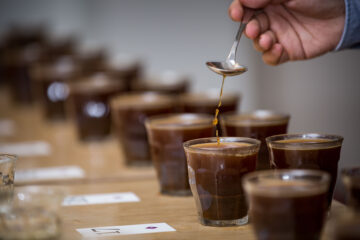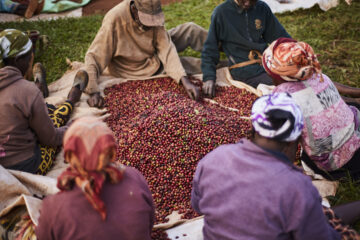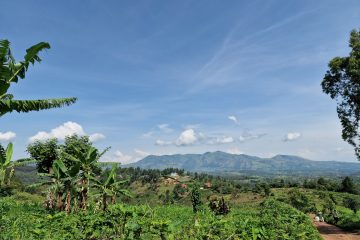
By Morten Wennersgaard
We just finished up a trip to El Salvador to follow up on this year’s harvest. It is still quite early for the highest altitudes, but there were already a lot of samples to cup, and the quality seems to be great. It’s apparently the lowest crop in 50 years, and a huge shortage of coffee, but fortunately we have locked in a lot prior to harvest. In general we are working out contracts for two–three years at a time, mainly for our special preparations.

What is on the cupping table right now is cupping much better than last year at the same time. Sweeter, better clarity, in the cup and more complexity seems to be present. At this time last year the cups was more closed in general and tasted slightly tart due to freshness, but they all opened up fine after a while.

Las Cruces
There is a lot of development at the Salavarria family’s farms. First of all they are currently having a lot of new and exotic cultivars in their nurseries. Many of these plants will begin to be planted at different blocks with various altitudes, sun exposure, etc. to try to find the best growing conditions for each new varietal.

We have made some adjustments and slightly changed the process on the washed coffees. All coffees are eco-pulped with a Jotagallo pulper, and about 70-80% off the mucilage is mechanically removed. Last year the parchment was sitting overnight in re-circulated water coming from this process, before being rinsed in the morning and dried. We now rinse it just after it’s coming from the demucilager, and it then sits overnight in clean water before being rinsed again in the morning and then moved to drying patio. We hope this can give even better cup transparency.

There are also a lot of small drying experiments going on for washed, honeys, and naturals. We cupped a super crisp and clean natural from a trial on raised beds, which was mainly dried in relatively thin layers in sun and natural semi-shade from trees. Will do a couple of trials this year, for instance with one farm and three different processes, as well. We have already locked in some of these based on the first cuppings. It will be something like 20 bags available, and we will most likely upscale this process next year.

Los Pirineos
Gilberto, the owner, and Luis, the manager, has really stepped up taking development to a different level. First of all they have been part of a research project on varietals. From this and other collected samples he has planted a garden of cultivars, with about 50 different cultivars at Los Pirineos.

Still, the coffees we are buying for now (and that are currently available) are from the traditional Bourbon Elite and Pacamara varieties. As they had to abandon the farms in that area over a period of about 12 years during the civil war, many of the farms still have the old traditional varietals. In other areas it was a lot of uprooting and replanting during those years trying to find more disease resistant cultivars with better yields etc.

In the last few years he has built a bunch of drying tables, both under shade and under sun. We have experimented with different levels of shade. Currently we are drying under 46% shade netting. It takes a month to dry those coffees. We will try to do some trials where we skin dry the coffee in a thin layer on patio for the first two days before moved to the drying tables. We are still doing trials together with Gilberto doing the same pickings dried in different ways. Currently there are trials going on with washing and fermentation as well. As with Jasal’s coffees, at Las Cruces Gilberto is using Jotagallo eco-pulpers with mechanical mucilage removal. We are testing out the difference between coffees taken straight from the process to the patios, with no soaking or fermentation, then parchment from the same pickings are soaked and rinsed 12 hours and 24 hours. It’s clearly a difference looking at the color of the parchment, and it will be interesting to see how and if it affects the flavors.

Gilberto and Luis have also started a project with the surrounding farms processing their coffees for them. It’s done based on the same standards as for Los Pirineos, and from what we have cupped so far the potential of stunning coffees seems to be huge. The smaller surrounding farms are already separating their coffees by blocks, and we will have a lot of samples from the different ones to go through very soon. Like Gilberto, they are doing some Pacamara, but predominately Bourbon Elite.


